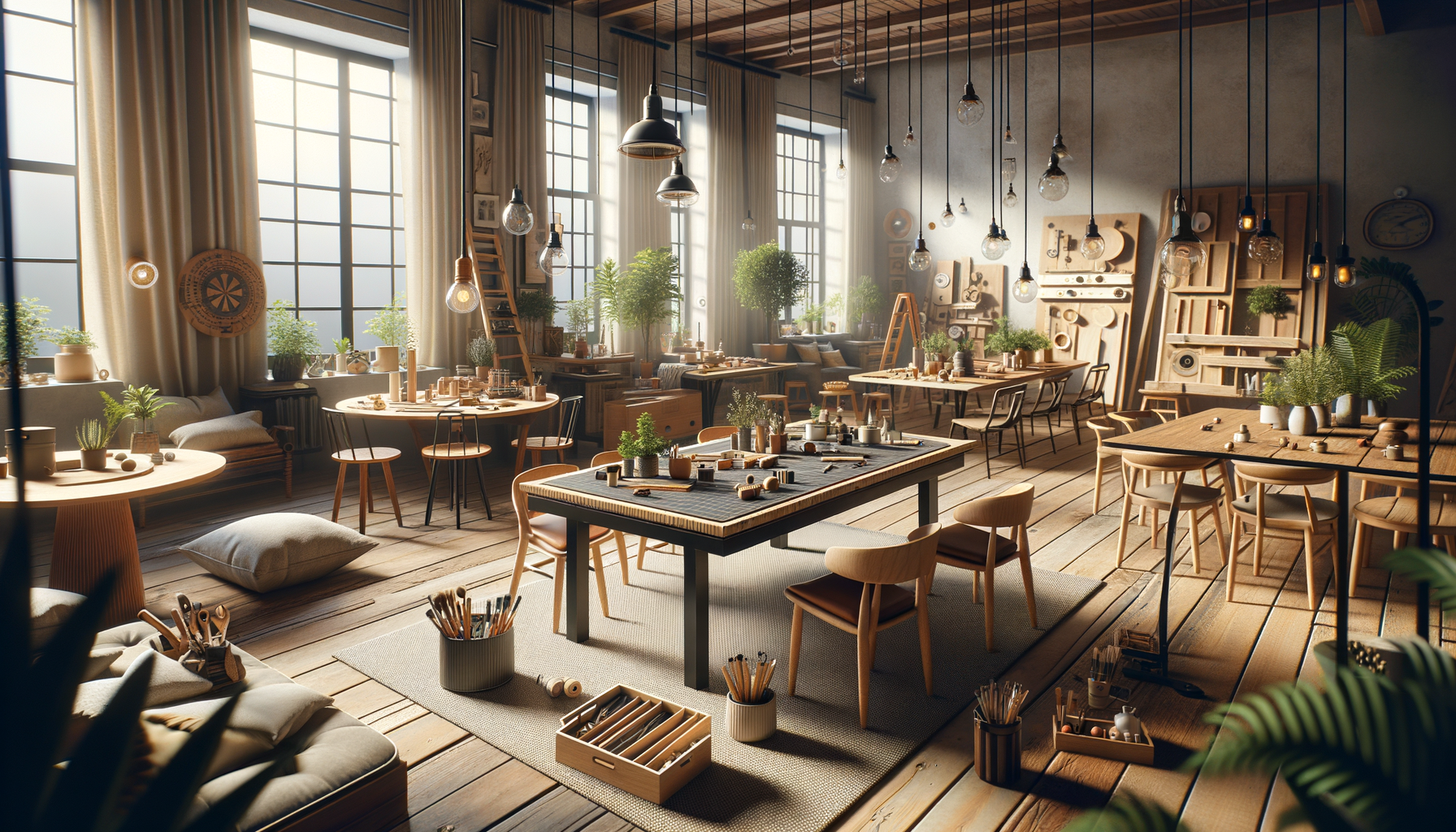Understanding Your Space
Before diving into the world of tables, it’s crucial to assess the space where the table will reside. Consider the room’s dimensions and layout to ensure the table fits comfortably without overcrowding the area. A well-chosen table should enhance the room’s functionality while complementing its aesthetic. Start by measuring the available space and noting any architectural features that might influence your choice, such as windows, doorways, or built-in furniture.
Think about the table’s purpose. Will it serve as a dining area, a workspace, or a decorative piece? Each function demands different size and shape considerations. For instance, a round table might foster a more intimate dining experience, while a rectangular table could be better for a workspace. Consider traffic flow around the table, ensuring there is enough space for movement and chairs.
Additionally, think about the room’s style. A table should harmonize with existing furniture and decor. Whether your style is modern, traditional, or eclectic, the table should act as a cohesive element in the room. By understanding your space, you set a solid foundation for selecting the perfect table.
Material Matters
The material of a table significantly impacts its durability, appearance, and maintenance requirements. Common materials include wood, glass, metal, and composite materials, each offering distinct advantages and drawbacks.
Wooden tables, for example, are renowned for their warmth and versatility. They come in various finishes and types, such as oak, walnut, and cherry, each offering unique grain patterns and colors. While wooden tables are sturdy and timeless, they may require regular maintenance to prevent scratches and stains.
Glass tables, on the other hand, exude a contemporary feel and can make a room appear more spacious. They are easy to clean but might not be suitable for households with young children due to safety concerns. Metal tables, often used in industrial or modern settings, are incredibly durable and easy to maintain but can be heavy and cold to the touch.
Composite materials, like MDF or particleboard, offer cost-effective alternatives to solid wood but may not be as durable. When selecting a table, consider the material’s longevity, maintenance needs, and how it fits with your lifestyle and decor.
Design and Style
The design and style of a table can dramatically influence the ambiance of a room. From minimalist and sleek to ornate and traditional, the possibilities are endless. When choosing a design, consider how it aligns with your personal taste and the overall theme of your home.
For a modern look, consider tables with clean lines and minimal embellishments. These tables often feature metal or glass elements and are well-suited for contemporary spaces. In contrast, traditional tables with carved details and rich wood tones can add a touch of elegance and warmth to a room.
If your style is eclectic, you might enjoy mixing different design elements, such as pairing a rustic wooden table with modern chairs. This approach creates a unique and personalized space. Consider the table’s legs and base, as these can also contribute to the overall design. Pedestal bases, for example, can offer more legroom and are ideal for small spaces.
Ultimately, the table’s design should reflect your personality and enhance the room’s atmosphere. By carefully considering design and style, you can select a table that serves as both a functional piece and a statement of your aesthetic.
Functionality and Features
Beyond aesthetics, the functionality of a table is paramount. Consider how you plan to use the table and what features might enhance its utility. For dining tables, extendable options can be beneficial for accommodating extra guests during gatherings. These tables often come with leaves that can be added or removed as needed.
For workspaces, consider tables with built-in storage or cable management systems. These features can help keep your workspace organized and clutter-free. If the table will be used for hobbies or crafts, a durable surface that can withstand wear and tear is essential.
Some tables come with adjustable heights, making them versatile for different activities, from dining to working. This feature is particularly useful in multi-functional spaces where one table serves multiple purposes.
Consider the table’s weight and ease of movement, especially if you plan to rearrange the room frequently. Lightweight tables can be easily moved, while heavier options might require more effort.
By evaluating the table’s functionality and features, you ensure it meets your practical needs and enhances your daily activities.
Budget Considerations
Finally, budget is a crucial factor in the table selection process. Tables come in a wide range of prices, influenced by material, design, and brand. Establishing a budget early on can help narrow down your options and prevent overspending.
When budgeting, consider the table’s long-term value. Investing in a high-quality table might cost more upfront but can save money in the long run by reducing the need for replacements. On the other hand, if your living situation is temporary or you enjoy changing your decor frequently, a more affordable option might be suitable.
Look for sales, discounts, or second-hand options to stretch your budget further. Many retailers offer seasonal sales, and online marketplaces can be a treasure trove for unique finds.
Remember to factor in additional costs, such as delivery or assembly fees, when planning your budget. By balancing cost with quality and needs, you can find a table that fits both your home and your financial plan.



Leave a Reply